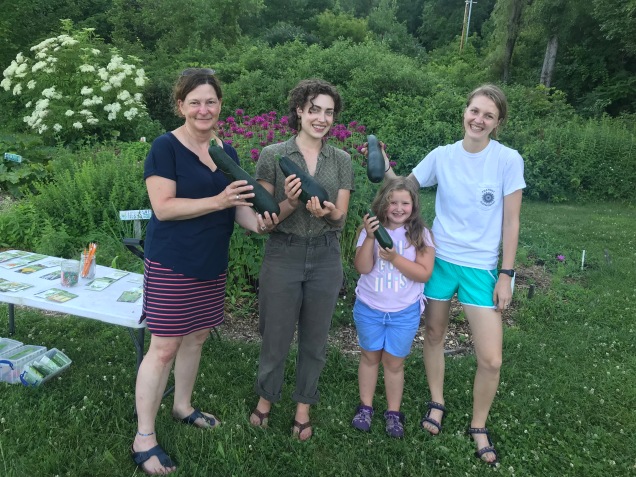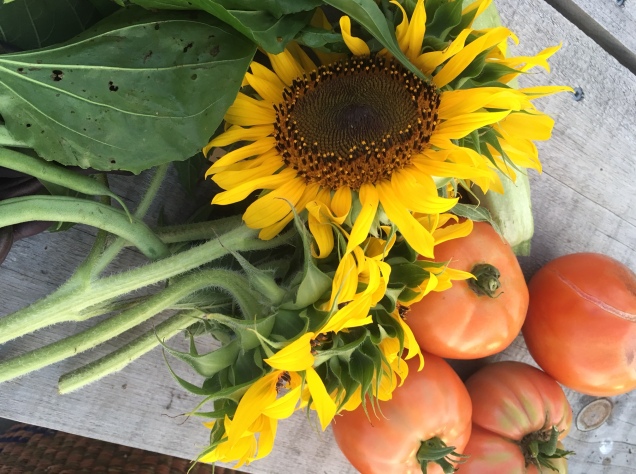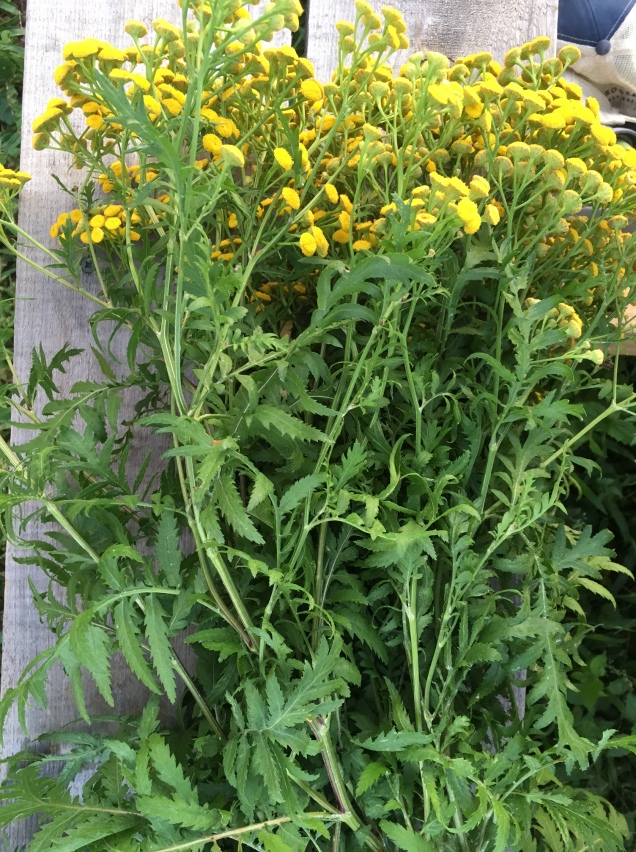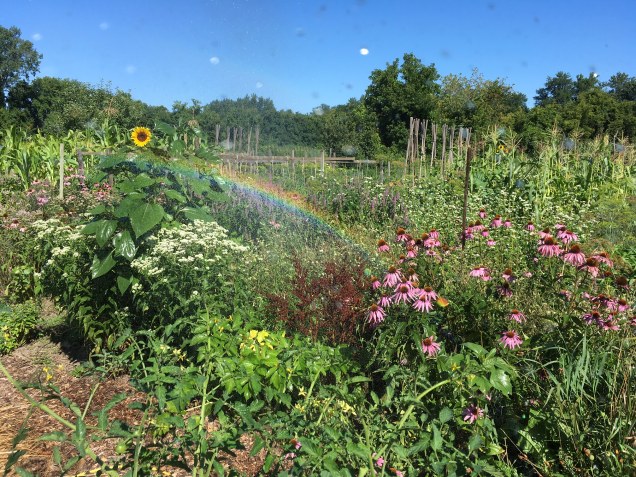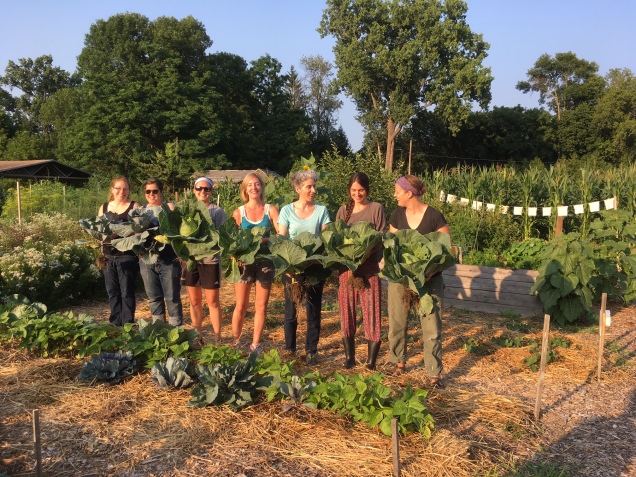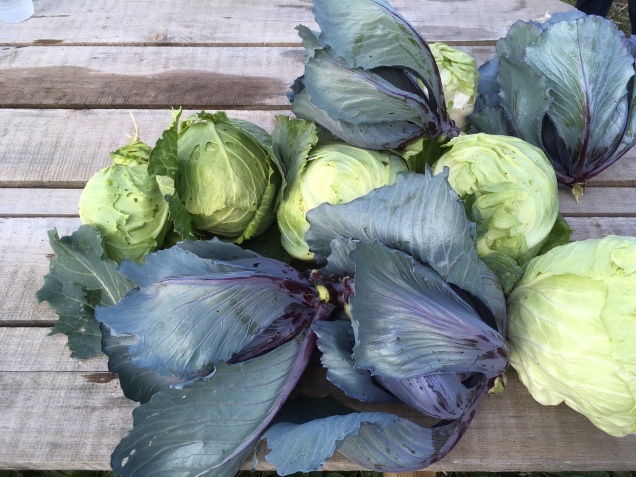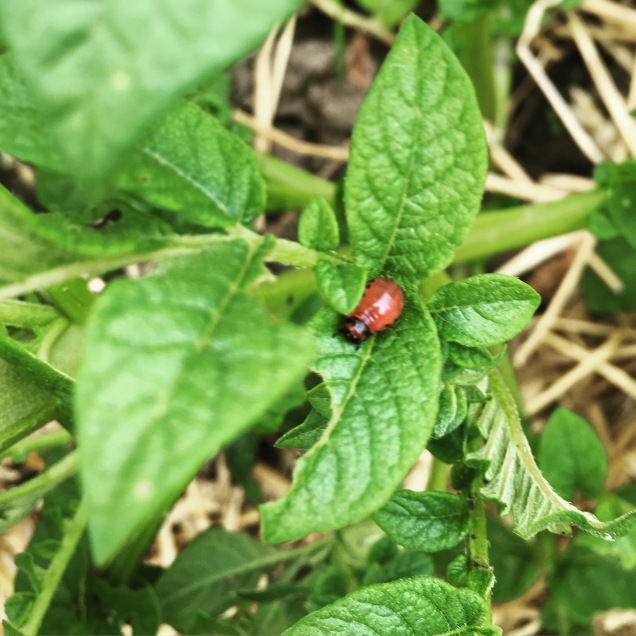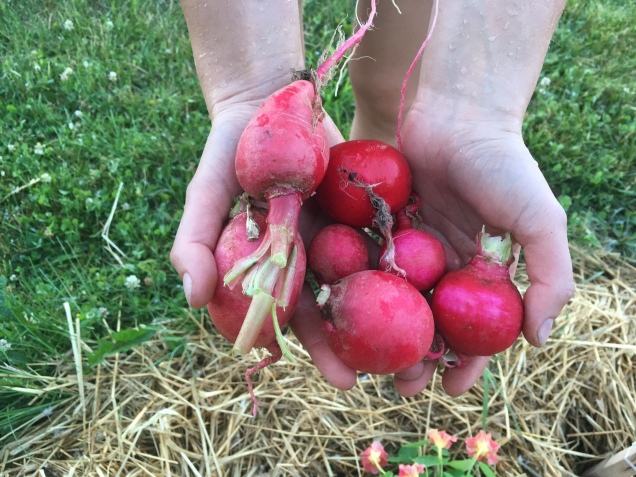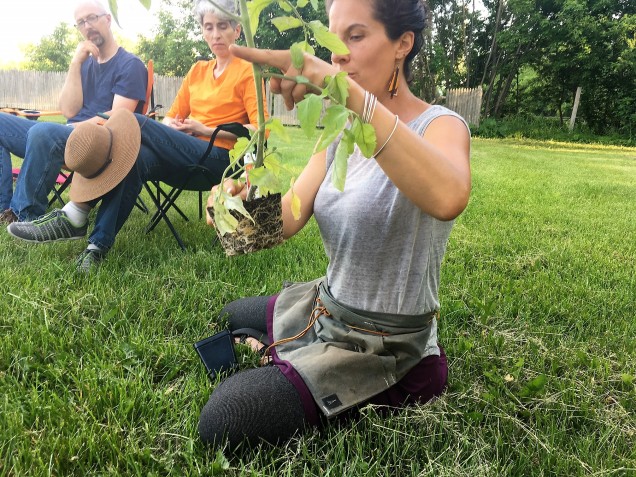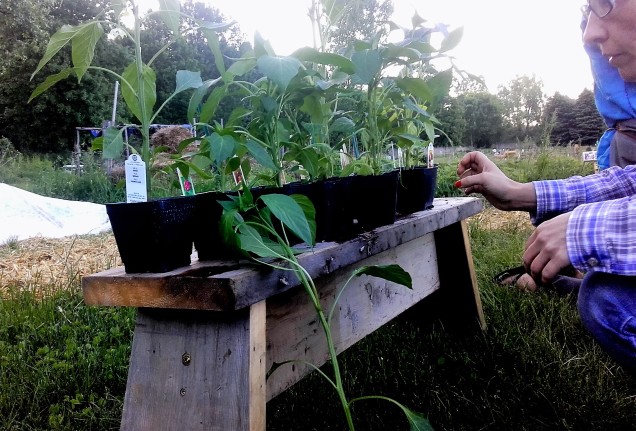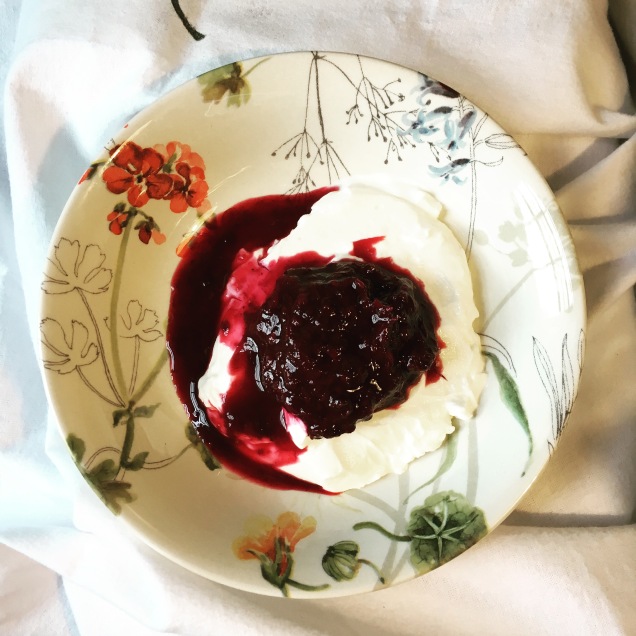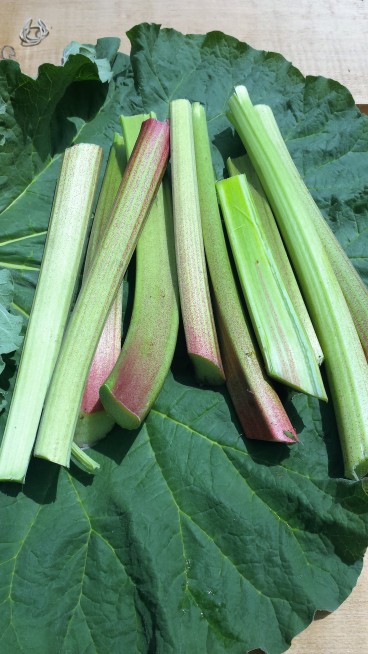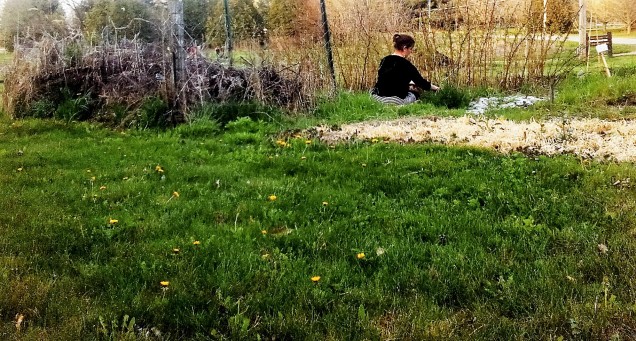Happy Fall, y’all! The Ethan Allen Homestead these days is alight with shades of ochre, vermillion and gold, peppered with crimson-colored sumac cones and wild bunches of concord grapes. It’s a beautiful yet bittersweet sight to see for us at the Community Teaching Garden because sadly, it means the beginning of the end of the growing season… Just earlier this month, everything was blooming and booming with harvest, and now the gardenscape has shifted very visibly as many of our plants’ energy is ebbing with the shift in daylight. September caused tomatoes to slow down and blush more timidly, flower beds that were a kaleidoscope of colors have taken on more mellow shades, and the days of endless juicy snap peas to snack on became a sweet memory while the tall pole beans grew dry and toughened on their trellises. Even the zucchini finally stopped being their usual zealous selves and admitted defeat to the frost.
And yet! These days, the fall raspberries continue to absolutely burst off their branches, our lanky kale palm trees are towering mightily like weathered oaks, and we still have plenty of roots like carrots, beets and daikon radishes nestled in the ground alongside Napa cabbages in our “kimchi” bed. Some black-eyed susans, calendulas, borage and tansies flowers are still beckoning to pollinators as late season snacks. And the growing cycle continues as the tiny peas we planted a few weeks ago are now reaching their new tendrils up in cleared beds to blanket the earth over the winter and fix nitrogen back into it. We tucked baby garlic bulbs into the ground and look forward to the twirls of scapes they will bring early next season. Plus we saw everything really come full circle during some of our last classes as we were still slapping at mosquitoes just like in back June… Some things never change.
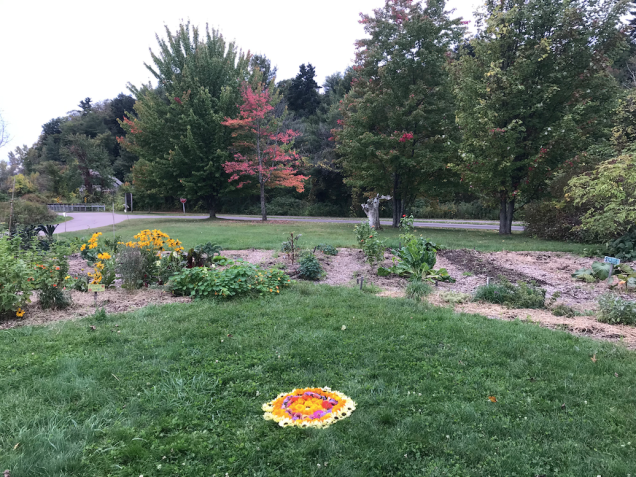
A good thing about the chilly weather is that it makes it easier to stay in to process all our produce and also process the events of the season. I think it’s no coincidence that the first cotyledons that emerged back in May were shaped like hearts, as they were a hint at how lovely the months to come would be. It was a fabulous season with memories that will last far longer than my Chaco sandal tan lines and the dirt under our fingernails. True to VCGN tradition, we acknowledged the end with mugs of hot cider, a flower mandala and a whole lot of gratitude. Reflection is just as important for a healthy garden as any good practice– it’s like feeding compost to the soil, trellising wily tomatoes and keeping the ground covered with cover crops.
Best in Show
We had some pretty superlative-worthy plants growing this season! For the best tasting tomato, Pink Berkeley Tie Dye and sun gold cherry tomatoes had our hearts. Napa cabbages were definitely the most beloved by slugs with radicchio as a runner up. Bumper crop veggie: need I even say it? Zucchini of course! (although tomatillos were a close second.) We voted the sugar baby watermelon for sweetest harvest (especially when sprinkled with spicy Tajin!) Peskiest pest goes to The Notorious CPB, who really made themselves comfortable and did a number on our potatoes and eggplants this year…so we have these next couple months to make a plan of action to tackle ‘em next season.
In terms of good looks, marvel of four seasons was voted cutest lettuce, and our purple cabbages earned most adorable brassicas. Our okra and rattlesnake beans gave us the most unexpectedly beautiful blooms, and the magic runner stalk beans won were the almost too pretty to eat champions. And the overall winners of the CTG beauty pageant were striped Cocozelle zucchini and the lovely lobed Costoluto tomatoes.
Preserved and precious
And after a season of such abundance, we have so many things brighten the coming winter days with plenty of summer flavors. The herb garden may be brown and dead-looking but the bright shine of summer can live on in the zesty tea mixes we made of lemon-balm, calendula petals, tulsi basil and raspberry leaves. We filled colorful jars of ferments like kimchi, sauerkraut, and fire cider for boosting our gut microflora and immune system. And we’re all set to have the most moisturized skin in Burlington with tins of herbal salve to soften up dry crackly hands in the cold! Oh, and so much tomatillo salsa, too.

Garden Grown Lessons
Some say clichés are cheesy, but really, who has ever complained about too much cheese?
“Waste not, want not.” I learned to eat and enjoy beet greens, stinging nettles, carrot tops, sweet potato vines, nasturtium pods and wild invasives like garlic mustard. Rhubarb leaves aren’t all that edible but they make great veggie packs when you forget your basket!

“Make hay while the sun shines.” Or as I like to say, “Make pesto while the basil goes crazy!” We turned blight-struck basil into pesto, which will theoretically last in the form of pesto cubes in the freezer to pop into warm pasta dishes all winter long (or they might all disappear by November, who’s to say?)
“The difference between a weed and a flower is judgement.” (big thanks to Traditional Medicinal tea bags for this one.) It was fun and delicious trying some new wild edibles for the first time that our fantabulous garden instructor Carolina showed us, like henbit, purple deadnettles, dandelions, sorrel, black raspberries, radish poppers and bachelor’s button flowers. I discovered my favorite kind of fast food just grows for free on the side of trails and bike paths! The world is full of abundance (and snacks) if we keep our eyes and minds open.

“A yellow leaf invites a closer look.” As gardeners, the best thing we can give a plant is attention (okay, it might be a tie with compost). Plants that seemed to be wilting or struggling showed us that they needed more love, like Septoria speckled leaves on tomatoes called out for a good pruning, strange shavings-like residue on our squash indicated squash vine borers living inside of their stems, lacy looking cabbage leaves meant it was time to mobilize tactics to confront the slugs.
And my favorite advice of all…. rub some dirt in it! It felt like a blessing every afternoon I got to dig into into the dark soil of the Winooski floodplain and help grow a healthy community of microorganisms below the soil while getting to be a part of growing our own above it.
The ground may be close to freezing over soon and be a bit harder to play in for a while, but some good news… life is a garden, dig it!







